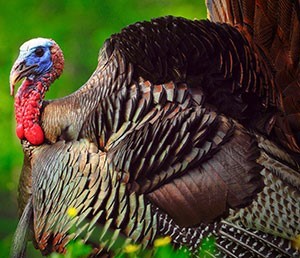The Recovery of the Wild Turkey Population in Minnesota
Did you know that wild turkey had gone from a native population of millions of birds to being almost extirpated by 1900 in the United States?
The restoration of the American wild turkey is one of the greatest wildlife conservation success stories.
That success story began in 1973 in Minnesota. The MN DNR traded a flock of its homegrown ruffed grouse for 29 turkeys from Missouri. The Missouri-born birds were released in Houston County in southeastern Minnesota and the population grew rapidly. Many partnering turkey advocates aided in their return, including members of the National Wild Turkey Federation who helped transport the flocks to new habitats. The restoration of the wild turkey over the past 25 years is one of Minnesota's greatest conservation success stories. Once rare, today wild turkeys are becoming a common sight throughout southern and western and even central Minnesota.
Wild Turkeys live year-round in open forests with interspersed clearings. They nest on the ground in dead leaves at the bases of trees, under brush piles or thick shrubbery, or occasionally in open fields. Wild turkeys are omnivorous, and their diet changes by the season: in spring and summer, they eat insects, seeds, and leafy vegetation; in fall and winter, they eat tree nuts, seeds, and berries. They will also eat small amphibians and reptiles. Poults, young turkeys, feed heavily on insects.
The Anoka Conservation District with funds from the Outdoor Heritage Foundation and National Wild Turkey Foundation is enhancing turkey habitat at the Robert and Marilyn Burman WMA and Gordie Mikkelson WMA. Tree thinning and buckthorn removal will open the forest and promote oak regeneration. Acorns are a favorite fall food. Increased native plant diversity in the woodlands, savanna, and prairies will attract a diversity of insects, providing a high protein food source.
Give thanks to the many conservationists who worked to restore wild turkey populations and their habitat.
